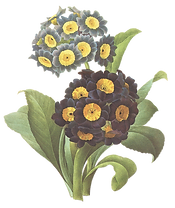Introducing Patterns
- brittany

- Oct 25, 2019
- 2 min read
Updated: Dec 28, 2019
Patterns are something that can be taught at an early age. It isn’t until Kindergarten when kids may start discovering the many different forms patterns come in.
When teaching patterns I always like to start by reading a ‘big book’ that shows patterns in everyday life. Patterns on animals, objects like beach balls or boat sails.
I also incorporate other books throughout the year that focus on patterns.
Here are some books that are great for Kinders : A-B-A-B-A — A Book of Pattern Play! and Pattern: Math Counts


Next, we generate a list of other things that we notice patterns on to get students thinking.
Before jumping into the lesson, it is helpful to remember the student developmental sequence for patterns.
Recognize a pattern.
Describe a pattern.
Copy a pattern.
Extend a pattern.
Create a pattern.
A fun and engaging way to begin your pattern unit is to have students start by listening and using their bodies to make patterns. For example: clap, slap knees, clap, slap knees. Have students join in with you as they verbalize the action. Students always have a blast with body movement patterns {ex: the jump, stomp, jump, stomp}.
Of course, unifix cubes are perfect ways to get students experimenting with patterns, but any math manipulative works great.
Start by having students follow a pattern that you create. Next, see if they can generate a particular kind of pattern {AB, ABC, AABB, etc.}
And lastly, see if students can create their own.
After the lesson, I wanted an independent center that my students could use during choice time. When I couldn’t find exactly what I was looking for, I decided to create my own.

Here is my BRAND new Fall Pattern Pack.
It comes with 5 different sets of pattern cards to use in your pocket chart. They are perfect for whole group introduction, small group reinforcement, or independent practice.
I have included: AB, ABC, ABCD, AAB, and ABBA patterns.
Inside, also find “I can” statement cards for each developmental stage.
I have also included 3 differentiated assessment pages.

You can find them here at my TPT store: Junior Kindergarten DayZ.
I love this Desktop Pocket Chart for Math Centers or small group instruction (or for you non-teachers…it is perfect for home practice!)
I hope you find it helpful!
xoxo-







Comments